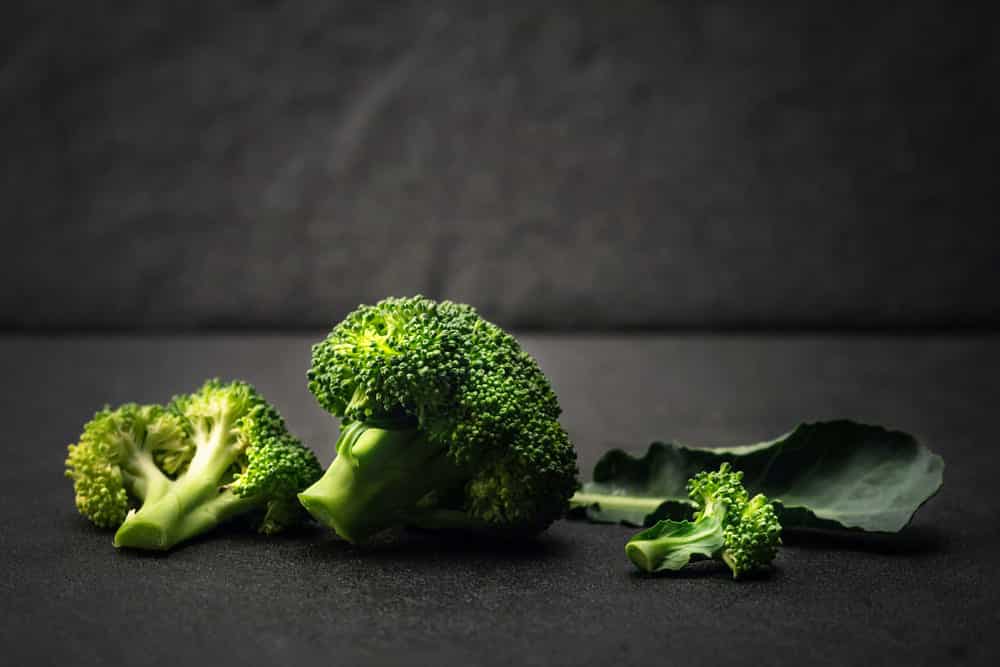
Broccoli is a green vegetable that comes from the cabbage family. It is among some of the most widely consumed green vegetables in the world. Broccoli is very healthy for the body, rich in Vitamin C and Vitamin K. It makes up good fiber for the body.
All of us can agree that most green vegetables are best consumed when fresh. Similar is the case with Broccoli which has a short lifespan. If you are leaving it on the counter, chances are it might go bad in 3 days. However, you can extend the utility and life of Broccoli by refrigerating it.
Now, did you just take some Broccoli out of the kitchen pantry but cannot help wondering, what are those black spots? They weren’t there when you first got your Broccoli? Is your Broccoli about to make its way to the trash can? Or can you just give it a good wash?
Continue reading to get your answers!
What To Look For In A Decaying Broccoli Plant?
Black Spots On Broccoli
One of the initial signs of broccoli degeneration is black dots. These black dots are fungal growth manifesting as black molds. Chances are they might appear as early as 48 hours. Or sometimes as late as a week. These Black Dots are your cue to start cooking up and using all your broccoli before it goes to waste.
Stinky-Partner!
Fresh broccoli has no odor. But if you’re beginning to notice a pungent smell in the kitchen, it’s probably the worn-out Broccoli. This mildly disturbing smell tends to get worse over time. Better get to work as soon as your nose detects it.
Yellow Yellow, dirty Fellow!
Yellowing is Broccoli’s worst enemy. Fresh broccoli has a dark green flower and slightly lighter green stem. Once the broccoli’s freshness starts declining, it begins to turn yellow. Now, at this stage, you don’t necessarily have to throw away the entire broccoli.
You can always just cut out the yellow part. Give the rest of the Broccoli a good boil. Stir-frying seems like a better cooking option to make sure you don’t end up ingesting fungal mold. That would certainly make your stomach very upset.
Are florets not so flowery anymore?
Fresh Broccoli Florets have the ideal symmetry. They are arranged properly. Once the downturn begins, the florets start decaying. You will no longer be able to see them. At this stage, it is better that you avoid using Broccoli.
How To Store Broccoli?
On the Kitchen Counter
If you plan on leaving Broccoli on the counter, keep a few things in mind. You have a narrow deadline of 72 hours after which Broccoli begins degrading. Make sure your kitchen pantry is clean and fungal-proof. Use an antiseptic to clean the storage occasionally.
In the Refrigerator
Did you order Broccoli in bulk? But now you’re not sure how to store it. First things first, if you’re planning to refrigerate, never wash your Broccoli. Although refrigerating is a great option, washing; not so much. When you wash Broccoli, it becomes even more fertile for fungal growth. All you gotta do is get some air-tight containers. Spaciously pack your Broccoli in and let it rest in the refrigerator. Try not to open the container before the day you must cook it. Chances are, every time you open the seal, you give way to bacteria.
Maybe, freeze it?
Broccoli can also be frozen. To do so, first properly wash the Broccoli. Then give it a good boil. Once you are done boiling it, let it cool. Chop it into small fine pieces. Get an airtight container and let it freeze. Doing all these steps is very beneficial. Whenever you need broccoli, all you have to do is defrost some and use it in whatever manner you like.
Now you know how to store your Broccoli. Be on the lookout for symptoms of decay. Once that begins, you know what you need to do. You don’t need to always have to throw your Broccoli away. Sometimes, just cutting the affected part works too. Nobody likes staying up with a bad case of diarrhea so remember, never take too much risk with decaying vegetables.